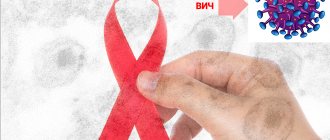Our body is a mechanism that often malfunctions. A phenomenon such as internal tremor in the body can appear for no apparent reason. However, trembling always has a reason. These may be physiological reasons, for example, a decrease in temperature, or psychological, when the tremor is caused by severe stress or anxiety.
The mechanism for the appearance of this condition is associated with the production of hormones that help the body cope with unfavorable conditions, but they are not always fully consumed. The result is an excess of hormones, which provokes tremors.
The condition may last for several minutes and does not pose any danger. But with a prolonged syndrome, it is worth thinking about the development of diseases of a physiological or psychological nature.
Kinds
Internal body tremor without visible tremors can be either natural or pathological. When occurring naturally, the condition is uncertain.
The reason may be, for example, a drop in temperature, which provokes trembling throughout the body or fear, after which relaxation occurs. But in the absence of external negative factors, the appearance of tremor is associated with pathological causes, that is, with the development of any diseases.
There are several classifications of the tremor condition, which make it possible to determine the etiology of the syndrome and select the optimal treatment model.
Classification of the condition according to the type of pathological process:
| View | Description |
| Physiological tremor | In this case, there is a slight trembling of the limbs, mainly appearing when the arms or legs are extended. Low-amplitude trembling of the fingers, hands (feet) or the entire limb is diagnosed. The appearance of the syndrome is often associated with taking large doses of alcohol or experiencing severe stress. The tremor intensity ranges from 8 to 12 Hz. |
| Essential tremor | Clinical studies show that essential tremor rarely occurs at rest and is associated with movement. Often this syndrome develops in old age. Localization of tremors is usually noted in a specific muscle group. For example, in the legs, arms, head. The amplitude of oscillations ranges from 4 to 8 Hz. The clinical picture will differ significantly depending on where the pathological attack is localized. |
| Intention (cerebellar) tremor | Tremor is activated, as a rule, at the moment of voluntary movements. The amplitude is insignificant, ranging from 3 to 4 Hz. Often only the human torso is affected, while the limbs and head remain unaffected by the pathological condition. |
| Parkinson's tremor (resting tremor) | In Parkinson's disease, tremor often appears in a person at rest. Oscillation amplitude is from 3 to 7 Hz. |
Classification based on shaking intensity:
- fast tremor - the amplitude of oscillations is from 6 to 12 Hz;
- slow tremor - the intensity of oscillatory movements ranges from 3 to 5 Hz.
Classification of the condition according to the type of involuntary movements:
- type of movements yes, yes;
- type of movements no-no;
- vibrations reminiscent of rolling balls;
- movements reminiscent of counting coins.
According to etiological characteristics, the state of tremor is classified as follows:
- emotional – associated with strong excitement, fear or stress;
- senile – develops in older people;
- hysterical - trembling appears at the moment of strong excitement of the nervous system;
- essential – appears with any movement;
- resting tremor - caused by Parkinson's disease;
- alcoholic – persons who abuse alcoholic beverages suffer; it can also appear with a diagnosis of liver failure and hypoglycemic coma;
- Iatrogenic (often called mercury tremor) – associated with intoxication of the body with mercury, both in acute and chronic forms;
- rubral - occurs when the middle structures of the brain are damaged, can appear both at rest and during movement;
- tremor that occurs as a symptom of thyrotoxicosis.
Hands are shaking
This symptom is easy to notice. If you stretch your hand forward, after a while it will begin to tremble. This condition is most clearly manifested in elderly patients. This is often due to poor flow of bioelectric impulses from the brain to the hands.
Often they try to eliminate tremors with alcohol. Alcohol-containing liquids have a sedative effect on the central nervous system. This condition cannot be called life-threatening, but beta blockers help relieve the symptom.
Symptoms
Internal body tremor with various etiological signs has similar manifestations; it can appear without visible trembling, or it can be so intense that others see it.
Tremors can affect the following parts of the body:
- eyes and eyelids;
- upper limbs;
- fingers;
- feet;
- torso;
- language;
- head;
- chin;
- lips;
- jaw.
Along with tremor, a person also experiences other symptoms that can more clearly describe the cause.
Possible signs:
- increased heart rate;
- increased anxiety;
- nervousness;
- irritability;
- feeling of unreasonable danger.
Dystonic tremor can appear in various situations. The most common tremors observed in the body are VSD (vegetative-vascular dystonia) of the hypotonic type.
The following symptoms are associated with internal tremor:
- general weakness;
- pale skin;
- cold fingers, which is associated with insufficient blood flow.
Patients with hypertension may feel chills during stressful situations or emotional stress. Along with the main symptom, a rapid heartbeat and heavy breathing are noted.
Signs of tremor not associated with dystonia:
- constant feeling of trembling, not associated with external factors;
- high body temperature, rising without infection or inflammation;
- coldness of the extremities and tremor in certain muscle groups;
- a feeling of shaking from the inside without the ability to determine the location of the nerve impulse.
All possible signs appear both spontaneously and regularly (chronically), disturbing a person for a long time. Long-term syndrome always indicates pathological disorders within the body and requires treatment.
Internal body tremors without visible trembling have been studied by scientists for a long time. The studies revealed several characteristic differences in each type of tremor.
Characteristic signs for each type of tremor:
Internal body tremors without visible trembling can be caused by mercury vapor poisoning
| Tremor type | Symptoms and characteristics of manifestations |
| Physiological tremor | Trembling increases when exposed to the following factors:
|
| Senile (senile) tremor | There is a slight trembling of the chin, head, lower jaw or fingers. In this state, it is difficult for a person to perform any manipulations. |
| Mercury tremor | Appears in the victim at rest, increased tremors are noted when performing any physical movements. The first signs of trembling are observed in the facial muscles, then the limbs are involved in the process. |
| Alcohol tremors | Trembling occurs with alcohol intoxication, withdrawal syndrome, or abuse of “hot” drinks. There is a slight trembling of the fingers when spreading them, a slight tremor of the facial muscles and tongue. |
| Hysterical tremor | Trembling intensifies during the period of psychogenic influence, the limbs and body are involved in the process. The tremor can be paroxysmal or constant. The intensity of oscillatory movements is not constant; the frequency of muscle contractions can vary significantly. |
| Cerebellar tremor | Has a distinctive characteristic. When you bring a limb to a specific target, the intensity of the trembling increases, and it becomes difficult to perform the manipulation. The tremor also intensifies when trying to maintain balance or stand in a certain position. There are also cases where trembling occurs when the body is positioned in a vertical state, and when taking a horizontal position, all signs go away. |
If your face is shaking
Hemifacial spasm is a shaking that occurs on the left or right side of the face. This condition is caused by irritation of nerve endings. The same twitching occurs in patients with Bell's palsy. When people feel tired, these symptoms often get worse. This type of tremor is not considered hazardous to health.
Reasons for appearance
Internal body tremor without visible tremors may be a symptom of a complex pathological process. A similar phenomenon can appear in a person while performing everyday activities and can cause irritability and anxiety.
There are many reasons, often related to nervous tension or stress. By eliminating the external stimulus, the unpleasant symptom recedes. However, in situations where tremor is pathological, it is impossible to do without the help of a doctor.
Frequent causes of anxiety symptoms:
- Stress, anxiety, fear. Severe emotional shock provokes the release of the hormone adrenaline, produced by the adrenal glands. As the body uses the hormone and its level in the blood drops, the tremor disappears.
- Hypothermia. When feeling cold, nerve impulses send a signal to parts of the brain and receive a response in the form of compression of blood vessels to preserve internal heat. Many muscles immediately tense up, followed by relaxation and a characteristic trembling in the muscle tissue.
- Climax. Hormonal changes during menopause often cause hot flashes or, conversely, cold, which is accompanied by internal tremors in the body.
- Fever. An increase in body temperature above 38 degrees provokes small, rapid trembling. This can happen with an allergic reaction, infection or severe inflammatory process.
- Post-anesthetic tremors. Anesthesia affects the process of controlling body temperature, so after emerging from anesthesia, the patient often feels cold and shivering. Warming the body with a blanket or heating pad can help relieve symptoms.
- Essential tremor. A similar phenomenon relates to a neurological factor and may be associated with diseases such as Parkinson’s disease, atherosclerosis, concussion, and Minor’s disease.
Symptoms and signs of Parkinson's disease - Low blood sugar. Glucose deficiency is possible if a person has not consumed food or food for a long time, then sudden trembling is a consequence of loss of strength. This often happens to patients diagnosed with diabetes.
- Sepsis, as a complication of infectious damage to the urinary system, skin, intestines or lungs. Trembling appears together with increased sweating, shortness of breath, high heart rate and pain.
- Alcohol tremors. Frequent consumption of alcohol in large doses provokes tremors in the body. Tremor may also be present in people who have abruptly given up a bad habit and are trying to overcome addiction.
- Lack of sleep. Insufficient night rest negatively affects the entire body as a whole. Often, trembling due to lack of sleep occurs in the limbs and torso.
- Abuse of drinks rich in caffeine.
- Taking certain groups of medications. If such a symptom appears after starting a course of medication, you should definitely consult a doctor about further use of medications. Tremor may be an allergic manifestation.
If the appearance of tremor is associated with any psychogenic disorders, you need to pay attention to the accompanying signs:
- sudden appearance of involuntary oscillatory movements;
- tremor appears when remembering a traumatic event;
- when a person is distracted, the trembling goes away;
- the person is susceptible to frequent depression.
If your hands are shaking
To understand that a person’s hands are trembling, you need to stretch your limbs in front of you and put a piece of paper on your palm, which will help you visually determine the rhythmic contractions and relaxations of the muscles. This symptom does not pose a danger to people in most cases. It is present in literally everyone.
Adrenaline is often produced. Its increased concentration in the blood can be caused by poor sleep quality or regular stressful situations. This condition also increases trembling. Asthma inhalers may make symptoms worse. This also applies to drinking caffeine in large quantities.
Diagnostics
It is impossible to determine the exact cause of internal tremor based on external symptoms alone. Here you need the help of a general practitioner, neurologist, psychotherapist, psychologist. To clarify the root cause, additional comprehensive diagnostics will be required.
In order to determine the cause, the following diagnostic measures are carried out:
- Collecting anamnesis, determining symptoms, establishing the presence of injuries, strokes, intoxication.
- Laboratory tests . They are carried out to identify metabolic and hormonal disorders. The levels of the hormones TSH, T4, T3, parathyroid hormone, the level of renal and liver markers, blood sugar concentration, and ceruloplasmin are determined. Copper levels are determined in the blood and urine.
- Consultation with an ophthalmologist. Confirm or exclude the presence of hepatolenticular degeneration, Kayser-Fleischer rings. With these pathologies, copper deposition occurs in the cornea.
- Electromyography. It is carried out to confirm or exclude polyneuropathy, which often causes tremor.
- Tremorography. The method provides information about the intensity of oscillatory movements.
- MRI and CT of the brain. Allows you to identify pathological changes that provoke the appearance of tremor. This could be a stroke, tumor formations, degenerative and atrophic processes in the brain.
In case of endocrine pathologies, an ultrasound scan of the thyroid gland, kidneys and organs of the genitourinary system is additionally prescribed.
Diseases and pathologies
Pathologies and diseases in which tremor is observed:
- Hormonal imbalances, especially in women.
- Diseases of the thyroid gland are often accompanied by tremors, weight changes, and a feeling of cold or, conversely, heat.
- Diabetes.
- Depression. If it is not treated on time, the functioning of the nervous system will be disrupted, which will lead to various malfunctions in the functioning of internal organs and systems.
- Epilepsy. Attacks can begin suddenly, including at night.
- Concussions, traumatic brain injuries.
- Tumors localized in the brain.
- Multiple sclerosis.
- Neuroses and other nervous disorders affecting the functioning of the central nervous system.
- Vegetative-vascular dystonia. With VSD, panic attacks often occur, during which unreasonable, causeless fear, increased heart rate and breathing are observed. The patient may feel cold and sting, feel feverish, and begin to fear that he will suddenly die or be helpless.
- Parkinson's disease is accompanied by shaking of the hands.
- Osteochondrosis provokes compression of the spinal vessels, neck tension, and head tremor.
When to see a doctor
Internal body tremor without visible trembling, as well as with obvious signs of oscillatory movements during a prolonged course, requires clarification of the cause and appropriate treatment. The initial examination is carried out by a general practitioner.
After diagnosis, the patient is sent for consultation to specialized specialists (neurologist, psychologist, ophthalmologist, traumatologist, narcologist).
Already from the initial examination one can presumably judge the reason that provoked the internal tremor. Detailed diagnosis gives a clearer picture, from which further tactics of drug therapy can be developed.
Prevention
Often tremors inside the body are caused by hereditary diseases, and accordingly, there is no specific prevention for this condition. Doctors may advise you to follow any recommendations in order to reduce the risk of possible complications.
Prevention is as follows:
- during the period of drug therapy, compliance with the instructions of the attending physician;
- compliance with dosages of medications prescribed by a doctor;
- eliminating habits such as alcohol abuse;
- do not abuse coffee and psychostimulants;
- compliance with moderate physical activity;
- proper nutrition;
- compliance with the work and rest regime;
- exclusion of stressful situations.
Treatment methods
Internal tremors can often be triggered by external negative influences. Therefore, first of all, you need to try to help yourself. Measuring body temperature will give a preliminary conclusion, if it is low, the body has suffered a loss of strength, fatigue or a post-stress state.
These are typical manifestations of dystonia. Relaxing the body and psycho-emotional state, as well as getting into a warm, comfortable environment are the first steps with which to begin treatment. If an unpleasant symptom does not subside, and a person feels this condition for a long time, he will most likely need qualified medical assistance and take certain medications.
Medications
Treatment for this condition is based on eliminating the root cause and intensity of the tremors. In mild stages, the patient can be helped by relaxing medications and mild sedatives. However, if the cause is pathological, a more rigorous approach is required.
Medicines prescribed to weaken or stop internal tremors.
| Group of drugs | Name | Action |
| Sedatives |
| They have a calming effect, suppress emotional stress, stop an attack of aggression, irritability, and panic attack. |
| Tranquilizers |
| Relieves feelings of fear, causeless anxiety, and internal chills. Prescribed for reactive and neurological depression caused by somatic diseases. |
| Vitamins and minerals |
| A deficiency of vitamins and microelements leads to muscle tremors, internal chills, and the appearance of goosebumps on the skin. Replenishing the balance of nutrients eliminates the unpleasant symptom and activates the normal functioning of the body. |
| Antidepressants |
| Eliminate symptoms of depression and emotional depression. It also relieves internal chills, a feeling of fear, weakens the feeling of causeless anxiety, and relieves dysphoria. |
If the cause of tremor is a disorder in the cerebellum, medications will not help. The patient is getting worse. Rarely, Clonazepam and Primidone can improve the condition.
In case of serious disorders, the patient is prescribed surgical treatment:
- stimulation of the thalamus;
- activation of thalamotomy.
The cause of tremor is a disruption in the production of thyroid hormones; hormone therapy will be required to normalize hormonal levels.
If the cause of the tremor is problems with the kidneys or liver, the patient needs a transplant or hemodialysis.
Traditional methods
There are many medicinal herbs and plants that help relax the emotional state, improve mood, and calm the nervous system. The maximum effect can be achieved if you use traditional medicine recipes together with medications.
Traditional medicine that relieves internal tremors and calms the nervous system.
| Means | Action | Preparation | Application |
| Scutellaria latifolia | A mild laxative, it has a calming effect on the nervous system, relieves attacks of convulsions and tremors. | Pour 1-2 g of plant with 1 glass of boiling water. Leave for 10-15 minutes. | Take as tea 2-3 times a day. |
| Valerian | Relieves nervous anxiety, anxiety, normalizes sleep, relaxes the nervous system. | 1 tsp. dry raw materials pour 1 cup of boiling water. Leave for 10-15 minutes. | Take as tea 2-3 times a day. |
| Oat straw | Calms hyperactive children, eliminates panic attacks and anxiety. Is a natural antidepressant. It can relieve the patient from osteoporosis and eliminate joint pain. | 1 tsp. raw materials pour 1 cup of boiling water. Leave for 10-15 minutes. Strain. | Take warm as tea 2-3 times a day. |
Traditional medicine recipes can stop tremors, relieve pain, and cope with anxiety and irritability. However, they cannot eliminate the root cause of pathological tremors; this requires conservative therapy.
Other methods
There are other techniques that allow you to cope with internal tremor and speed up the recovery process in case of pathological etiology of the condition.
This:
- physical therapy, breathing exercises, meditation, yoga and swimming have a positive effect on the intensity of internal tremor;
- reflexology and physiotherapy;
- psychotherapy helps eliminate an unpleasant symptom if it is caused by nervous fatigue or stress;
- in severe situations, electrical stimulation of the thalamic nuclei and stereotoxic thalamotomy are prescribed.
The method of therapy is determined by the attending physician, based on the diagnostic results and the cause that provoked the symptom of internal tremor.
Sedatives
Used for anxiety, nervous tension, stressful situations, or poor sleep.
To eliminate body tremors, doctors advise using medications that include herbal extracts:
- Valerian.
- Peony.
- Motherwort.
- Hawthorn.
Such drugs have a mild sedative effect, do not change the reaction rate, and do not cause addiction. To achieve the desired result, you need to use these medications for at least 4-8 weeks.
Vitamin complexes
It is used when there is a lack of biologically active substances, if the body is overtired or under stress.
Antidepressants
What medications are used for anxiety, constant worry, and other signs of depression. The choice of a suitable medicine is made only by a specialist after determining the patient’s condition, identifying contraindications and possible somatic disorders.
The following drugs are suitable for therapy:
- Amitriptyline.
- Fluoxetine.
- Azafen.
The course of treatment with antidepressants lasts from 2 to 6 months. Modern drugs cause almost no side effects and have no contraindications.
Possible complications
Internal tremor leads to only one main complication - the asocialization of patients. This condition leads to depression, discomfort, and isolation.
Such people have a reduced social circle, they try to find a job where they can spend more time alone. This certainly leads to increased nervous tension and, accordingly, to an increase in the unpleasant symptom.
If the cause of the tremor is Parkinson's disease, cerebellar disorders, or hepatolenticular degeneration, the patient may become disabled as the condition progresses.
The task of relatives in such cases is to provide support and psychological assistance. When prolonged internal body tremors occur, a person becomes even more irritable, even if it occurs without visible tremors.
This condition in itself causes a feeling of panic. Patients are often prone to suicidal tendencies. That is why in the treatment of the problem, a special place is given to psychological assistance, so that the patient tries to forget about his problem and switch to other positive interests.
What is leg tremors
Physiological tremor is caused by physical and psychological fatigue, alcohol intoxication, stressful situations, hypothermia, etc. This disease is easy to treat. Subject to compliance with the doctor’s requirements, it is minimized or reduced to zero.
In contrast, pathological tremor accompanies a number of serious diseases. These include Parkinson's disease (usually occurs in older people), multiple sclerosis, etc.
Both newborns and elderly people can suffer from tremor.











